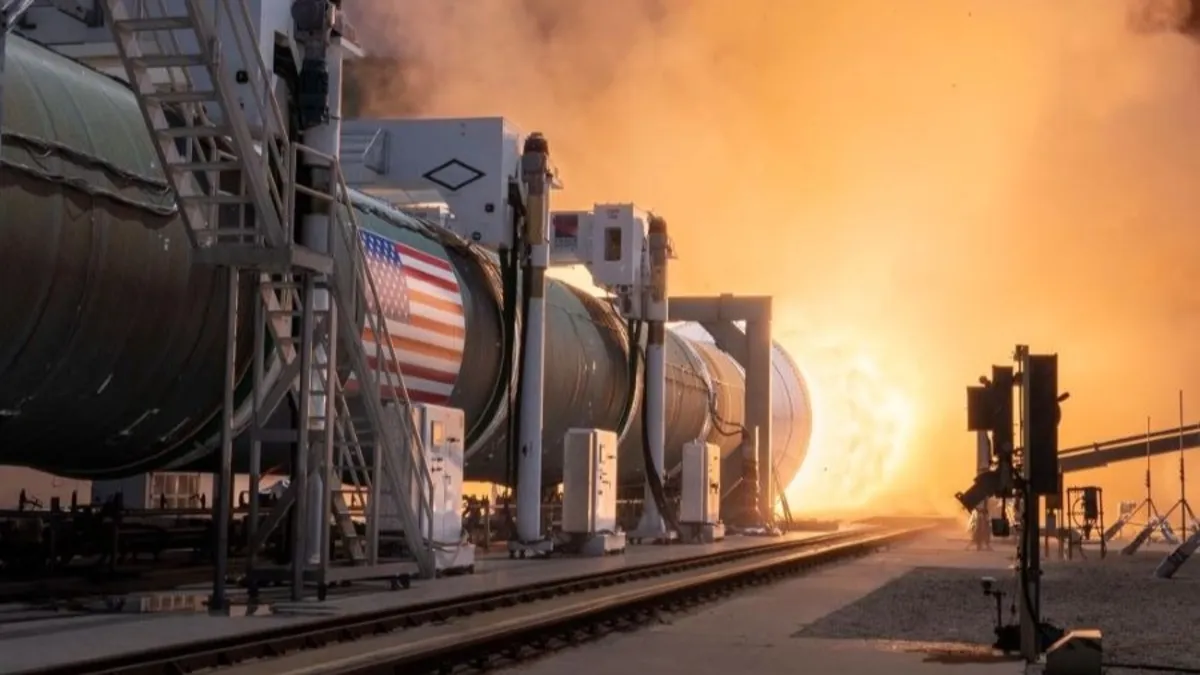
An upgraded version of one of the solid rocket boosters used for NASA's Space Launch System (SLS) experienced an anomaly during a critical test conducted on June 26. This test, known as the Demonstration Motor-1 (DM-1) Static Test, took place at Northrop Grumman's facility located in Promontory, Utah. The test simulated a launch-duration burn that lasted approximately two minutes, showcasing the first demonstration of Northrop Grumman's Booster Obsolescence and Life Extension (BOLE) upgrade, which is an enhanced five-segment motor designed to provide greater lifting power for future versions of the SLS.
During the test, shortly after the spokesperson on Grumman's recording marked T+100 seconds, an unexpected outburst of flames was observed erupting from the top of the engine nozzle. A few moments later, as another spokesperson announced the activation of the aft deluge, an even larger burst emitted from the rocket's exhaust, sending nearby debris flying into the flames and around the test site. "Whoa," exclaimed one of the test operators as the burn continued, followed by an audible gasp. Despite this alarming incident, the anomaly was not acknowledged for the remainder of the test, which appeared to conclude as planned.
Jim Kalberer, Grumman's vice president of propulsion systems, commented on the situation, stating, "While the motor appeared to perform well through the most harsh environments of the test, we observed an anomaly near the end of the two-plus minute burn. As a new design and the largest segmented solid rocket booster ever built, this test provides us with valuable data to iterate our design for future developments."
The Space Launch System, which is NASA's rocket supporting the agency's Artemis program, was designed on the foundation of legacy systems that were utilized during the space shuttle era. The SLS's core stage fuel tank is an augmented version of the tank that launched space shuttles, and it employs the same RS-25 engines that were responsible for launching the space shuttles into orbit. Additionally, the segments from the shuttle's solid rocket boosters are also being utilized once again.
Northrop Grumman played a significant role in supporting Artemis 1 and is set to assist with Artemis 2 and Artemis 3 using shuttle-era hardware. The transition to newer hardware is planned for Artemis 4 through Artemis 8. However, the upgraded BOLE engines are not expected to be introduced for launch until Artemis 9, which will utilize the SLS Block 2 configuration.
The upgraded BOLE engines include enhanced, newly-fabricated parts that replace components that are no longer in production, along with carbon fiber composite casings and improved propellant efficiencies. These advancements are designed to enhance the booster’s performance by more than 10 percent compared to the solid rocket engines currently being used in earlier SLS launches.
Thursday's DM-1 BOLE test was comprehensive, collecting more than 700 data points throughout the booster, which produced an impressive thrust of over 4 million pounds, according to Northrop Grumman. This extensive data will be crucial for refining designs and ensuring the success of future missions in the Artemis program.